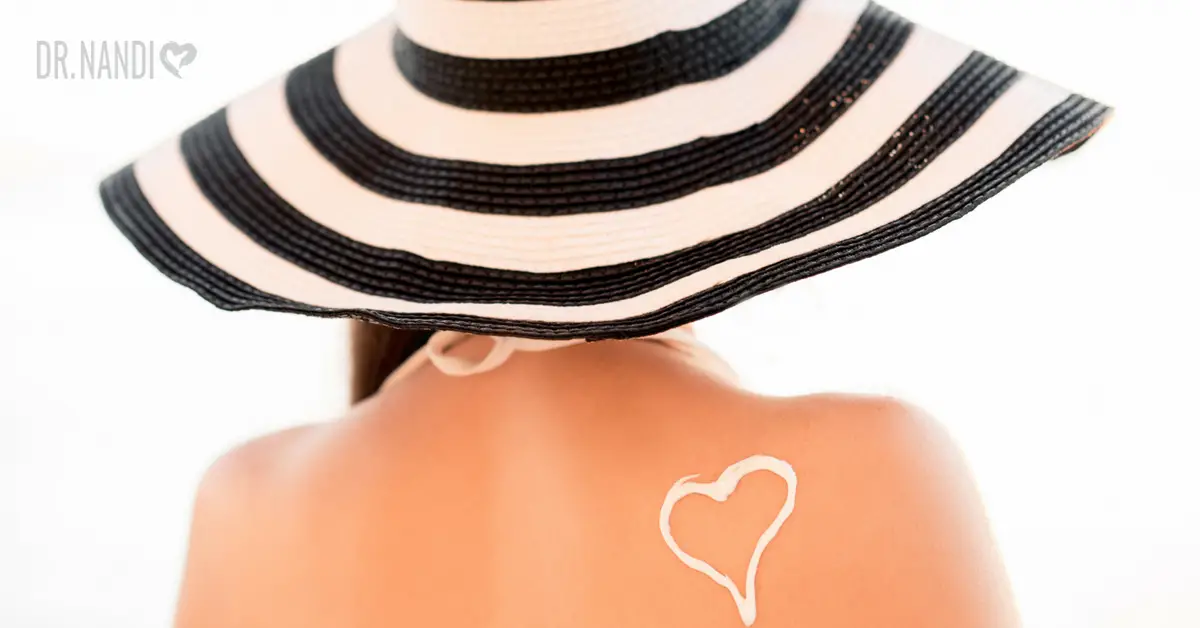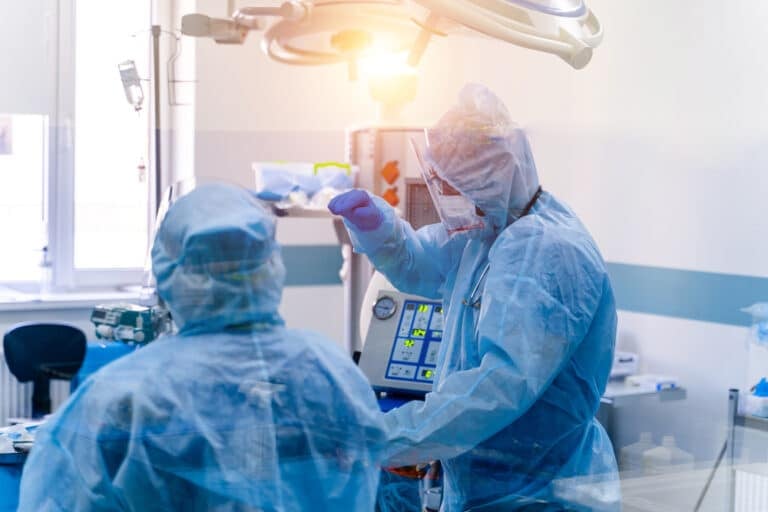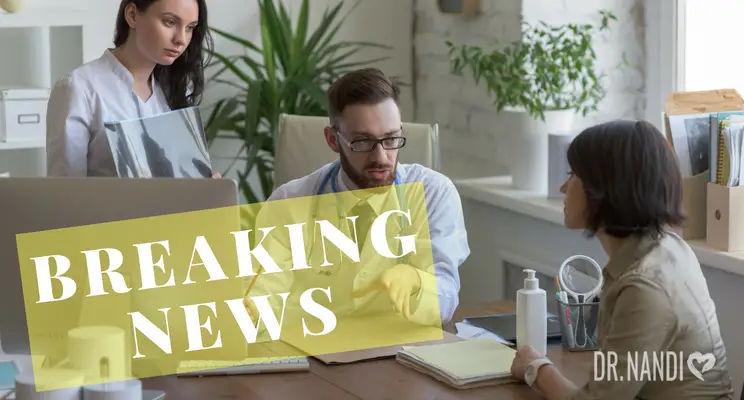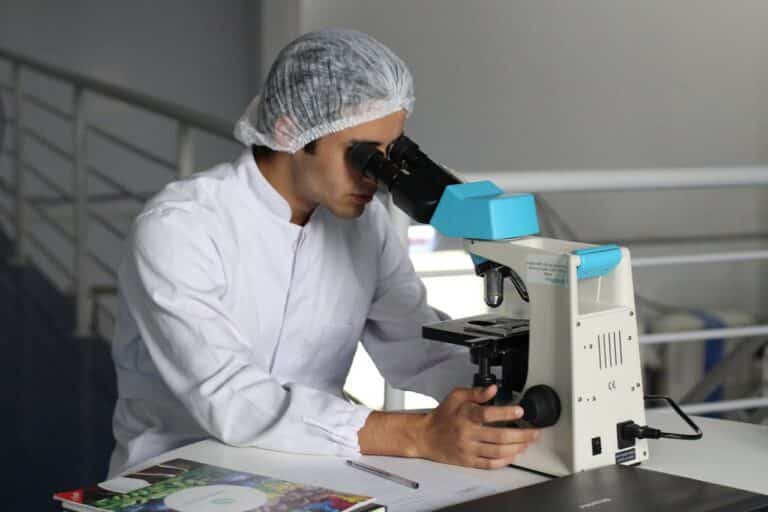Article provided by Annmarie Skin Care which has received Dr. Nandi’s Health Hero Stamp of Approval.
You’ve heard it a million times. Wear sunscreen every day, all day, rain or shine. And you certainly wear it when you go to the beach, go for a hike, picnic all day in the sun…
But what about when you’re driving, walking to work, or enjoying brunch on the patio?
Sometimes it doesn’t show up for a few months or even a few years, but you can be sure that sun exposure will come back to bite you, with increased fine lines and wrinkles, sagging, and discoloration.
Your daily routine
The best thing you can do to keep your skin looking youthful is to wear sunscreen. Every. Single. Day. And this isn’t something you haven’t heard before, we’re just here to remind exactly why it’s so important.
To that end, we did a little research to dig even deeper into just what happens when we skip a day of sunscreen.
It’s a little scary.
1: More people suffer from skin cancer than from any other cancer, period.
Skin cancer is the most common form of cancer in the United States. In 2011, according to the Centers for Disease Control and Prevention (CDC), about 65,500 people were diagnosed with it, and just over 9,000 people died from it.
Did you know that by applying sunscreen, you can cut your risk of melanoma—the most dangerous form of skin cancer—in half? According to a 2011 study from Australia, adults aged 25 to 75 who applied sunscreen every day were half as likely to be diagnosed with melanoma after 10 years than those who just applied it now and then. In addition, those using sunscreen had a 73 percent lower risk of invasive tumors that penetrated beyond the skin’s surface.
2: If you have red hair, you’re even more at risk for cancer…and not because you’re fair skinned.
Used to be that scientists thought that redheads were more at risk for skin cancer because of their fair skin. But recent studies have shown that it’s even more dangerous than that.
In 2013, for example, researchers discovered that the MC1R gene mutation, which creates red hair and light skin, also promotes an important cancer-causing pathway. In other words, this particular gene, when exposed to UV radiation, actually promotes signaling that may lead to cancer.
In people without red hair, the MC1R gene helps suppress tumors. In redheads, however, who have a mutated MC1R gene, it lacks this protective property, leaving cells open to damage that can lead to cancer. Researchers estimated that red-haired people have a 10-to-100-fold higher frequency of melanoma.

3: Sunlight continues to damage skin into the nighttime hours.
You may think that once you duck out of the sun, you’re safe, but we now know that’s not how it works.
Yes, UV rays can cause damage to your skin cells immediately, but according to a 2015 study, most of the damage occurs hours after sun exposure. Researchers exposed human skin cells (called “melanocytes”) to UV radiation. The radiation damaged DNA immediately, but even hours later in the dark, the melanocytes were still causing damage.
After digging a little deeper, researchers found that UV light activated two enzymes in the skin that excited melanin in cells, the compound that creates skin pigment or color. That “energy” was transferred to DNA in the dark, causing the same damage that sunlight caused in the daytime.
Though this is cutting-edge research, scientists already suggested a solution – apply sunscreen after sun exposure. So if you forget, it’s never too late to help prevent some skin damage!
4: Just two days of exposure to uva light damages skin at the molecular level…leading to sagging and bagging.
We all think that going out “just this once” without sunscreen won’t hurt us.
Not true, scientists say.
In 2014, researchers showed that one particular type of UV radiation that we’re all exposed to every day can be particularly dangerous to skin cells. They shined a low level of pure UVA1—which makes up most of the UV light in our atmosphere—onto skin samples from human volunteers. The exposure mimicked UVA levels from strong sun exposure lasting about two hours.
The next day, they took tiny samples of the skin to analyze them. They then repeated the process three more times on each participant.
Results showed after just two exposures, the UVA1 rays caused skin cells to create molecules that break down collagen—that skin protein that keeps our skin firm, smooth, and youthful.
The skin darkened in color a little—tanned—but this did not protect the skin from additional damage from the collagen-destroying molecule at the next exposure.
Remember—UVA light is the kind that comes through even on cloudy days, and is most damaging to skin.
5: Regular sunscreen use can prevent wrinkles and dark spots.
Who doesn’t want to prevent wrinkles? Most of us don’t hesitate to slather on the anti-wrinkle creams, but without sunscreen, we could be spinning our wheels.
In case you weren’t sure that sunscreen would really help, we have evidence now. In a 2013 study, researchers compared skin aging in 900 men and women from Australia between 1992 and 1996. Participants who used sunscreen every day—applying a formula with an SPF of 15 or more to hands, face, neck, and arms—were less likely to have wrinkles and dark spots after 4.5 years than those who didn’t, even if they were middle-aged.
More specifically, those who used daily sunscreen showed 24 percent less skin aging than those who only used it now and then or not at all. All participants benefited, even those up to 55 years of age.
“We now know that protecting yourself from skin cancer by using sunscreen has the added bonus of keeping you looking young,” said lead study author Dr. Adele Green.
Sources:
“Daily Sunscreen Use Cuts Melanoma Risk in Half, Study Says,” Skin Cancer Foundation, http://www.skincancer.org/news/sunscreen/daily-sunscreen-use-cuts-melanoma-risk-in-half-study-finds.
Adele C. Green, et al., “Reduced Melanoma After Regular Sunscreen Use: Randomized Trial Follow-Up,” Journal of Oncology, January 20, 2011; 29(3):257-263, http://jco.ascopubs.org/content/29/3/257.long.
M.C. B. Hughes, et al., “Sunscreen and Prevention of Skin Aging, A Randomized Trial,” Annals of Internal Medicine, June 4, 2013; 158:781-790, http://annals.org/article.aspx?articleid=1691732.
Juxiang Cao, et al., “MC1R Is a Potent Regulator of PTEN after UV Exposure in Melanocytes,” Cell, August 22, 2013; 51(4):409-422, http://www.cell.com/molecular-cell/abstract/S1097-2765(13)00583-2.
Sanjay Premi, et al., “Chemiexcitation of melanin derivatives induces DNA photoproducts long after UV exposure,” Science, February 20, 2015; 347(6224):842-847, http://www.sciencemag.org/content/347/6224/842.abstract.
Frank Wang, et al., “Dermal Damage Promoted by Repeated Low-Level UV-A1 Exposure Despite Tanning Response in Human Skin,” JAMA Dermatol., 2014; 150(4):401-406, http://archderm.jamanetwork.com/article.aspx?articleid=1782131.











 Subscribe to Ask Dr. Nandi YouTube Channel
Subscribe to Ask Dr. Nandi YouTube Channel










